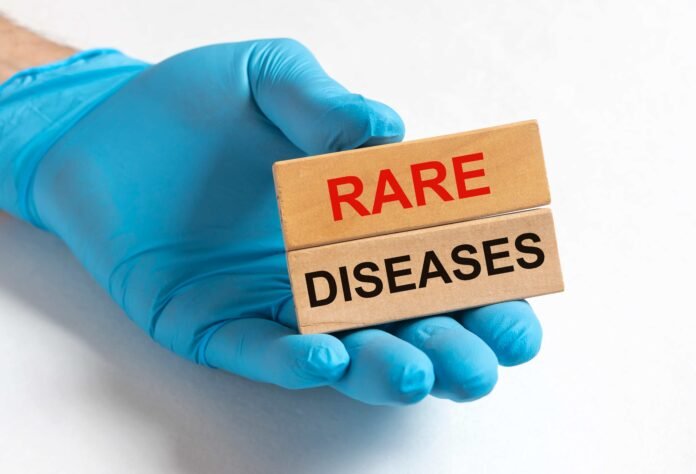
When it comes to health-related topics, a vast array of conditions exists, ranging from the common to the incredibly rare. These rare diseases often have a profound impact on individuals’ lives, yet due to their scarcity, they might not receive widespread attention. In this blog, we will explore the top 10 rare diseases in the world that you may have never heard about. By shedding light on these conditions, we hope to increase awareness and understanding, ultimately leading to better support and resources for those affected.
Page Contents
What are Rare Diseases?
Rare diseases, also known as orphan diseases, refer to medical conditions that occur infrequently within a specific population. In most countries, a disease is classified as rare when it affects fewer than 1 in 2,000 individuals. While each rare disease might be uncommon, collectively, they impact a substantial number of people globally.
Criteria for Rarity: The rarity of a disease isn’t solely based on its prevalence. Factors such as lack of scientific knowledge, difficulty in diagnosis, and the absence of effective treatment options contribute to the classification of a disease as rare. These conditions often pose significant challenges to both patients and healthcare providers.
Here are Some Top 10 Rare Diseases in the World You Never Heard About:
1. Hutchinson-Gilford Progeria Syndrome
Hutchinson-Gilford Progeria Syndrome (HGPS) is an extremely rare genetic disorder characterized by rapid aging in children. This condition causes affected individuals to exhibit features commonly associated with aging, such as thinning skin, joint abnormalities, and cardiovascular issues. HGPS occurs due to a genetic mutation and affects an estimated 1 in every 4 to 8 million newborns worldwide.
2. Fibrodysplasia Ossificans Progressiva (FOP)
Fibrodysplasia Ossificans Progressiva is a rare disorder where muscle tissue and connective tissues gradually transform into bone. This transformation restricts movement as it progressively immobilizes the body. FOP affects approximately 1 in 2 million individuals globally and currently lacks a definitive cure.
3. Fields’ Disease
Fields’ Disease, also known as Congenital Insensitivity to Pain with Anhidrosis (CIPA), is a rare genetic disorder that inhibits the ability to feel pain and regulate body temperature. Individuals with CIPA are unable to sweat, leading to overheating, and are prone to injuries due to the absence of pain perception. This condition affects roughly 1 in every 125,000 people worldwide.
4. Stiff-Person Syndrome
Stiff-Person Syndrome (SPS) is a neurological disorder characterized by muscle stiffness and spasms, leading to difficulties in movement. This rare condition affects an estimated 1 in 1 million individuals and can significantly impact an individual’s quality of life.
5. Von Hippel-Lindau Disease (VHL)
Von Hippel-Lindau Disease is a hereditary disorder that predisposes individuals to the development of tumors and cysts in various parts of the body. These growths can occur in the eyes, brain, spinal cord, kidneys, and other organs, potentially leading to severe complications. VHL affects about 1 in 36,000 people worldwide.
6. Alien Hand Syndrome
Alien Hand Syndrome is a neurological disorder where an individual’s hand seems to take on a will of its own, performing actions without conscious control. This rare condition, while captivating, significantly impacts daily functioning. Alien Hand Syndrome affects an exceedingly small percentage of the population.
7. Microcephaly
Microcephaly is a rare neurological condition characterized by an abnormally small head in infants. This condition is often associated with incomplete brain development, leading to various developmental challenges. Although rare, the prevalence of microcephaly has increased due to factors like the Zika virus.
8. Harlequin Ichthyosis
Harlequin Ichthyosis is a severe genetic disorder that affects the skin’s development, resulting in thick, diamond-shaped plates of skin and severe dehydration. This rare condition requires intensive medical care and affects around 1 in 300,000 births globally.
9. Paraneoplastic Pemphigus
Paraneoplastic Pemphigus is a rare autoimmune blistering disorder often associated with an underlying neoplasm (tumor). It affects the skin and mucous membranes, causing painful blistering and ulceration. This condition is challenging to diagnose and treat.
10. Fibrous Dysplasia
Fibrous Dysplasia is a rare bone disorder characterized by abnormal growths or tumors within the bones, leading to deformities, fractures, and pain. This condition affects a small percentage of the population and requires specialized treatment.
Conclusion:
Understanding and raising awareness of rare diseases are crucial steps toward supporting affected individuals and advancing research for effective treatments. While these conditions are uncommon, their impact on individuals’ lives is substantial. By shedding light on the top 10 rare diseases globally, we aim to promote awareness and encourage further research and support for those affected by these challenging conditions.
Remember, while these rare diseases may seem distant or unfamiliar, they affect real people and families worldwide. As part of the global community, increasing awareness and supporting research efforts are vital in addressing the challenges posed by these conditions.
Frequently Asked Questions (FAQs) on Rare Diseases:
1. Are there treatments available for these rare diseases?
A. While some rare diseases have treatments available, many do not have a cure or specific therapies. Research is ongoing to find solutions.
2. How are rare diseases diagnosed?
A. Diagnosing rare diseases often involves genetic testing, medical imaging, and consultation with specialists.
3. Can rare diseases be prevented?
A. In some cases, genetic counseling and early intervention can help prevent or manage rare diseases.
4. Do rare diseases run in families?
A. Yes, many rare diseases have a genetic component and can be inherited from parents.
5. Where can I find more information about rare diseases?
A. You can visit organizations dedicated to rare diseases and consult medical professionals for further information and support.
The article provides an exploration of the top 10 rare diseases worldwide, shedding light on each condition’s characteristics, prevalence, and impact on affected individuals. It emphasizes the importance of raising awareness and supporting research efforts for these less common yet impactful health conditions.
